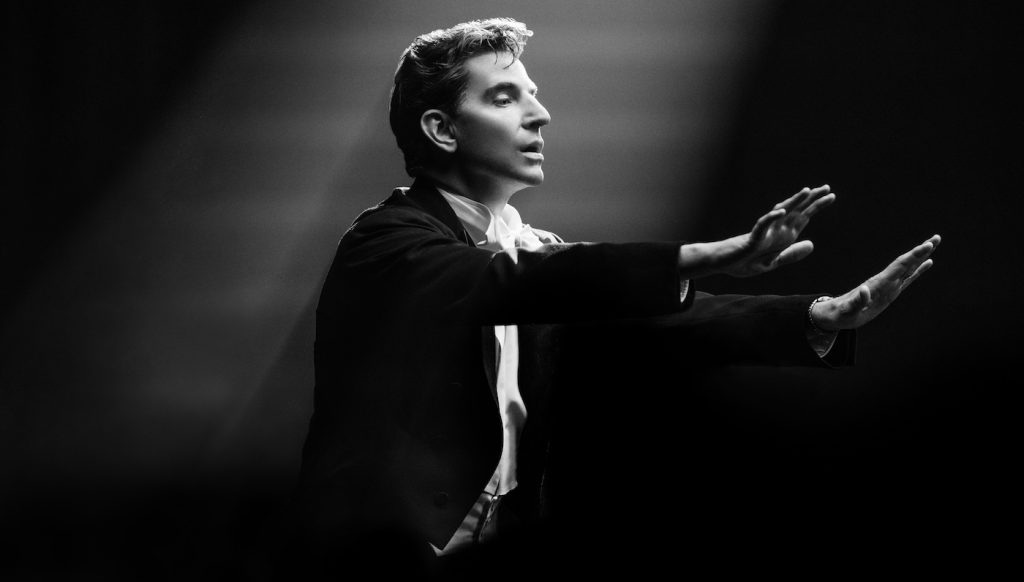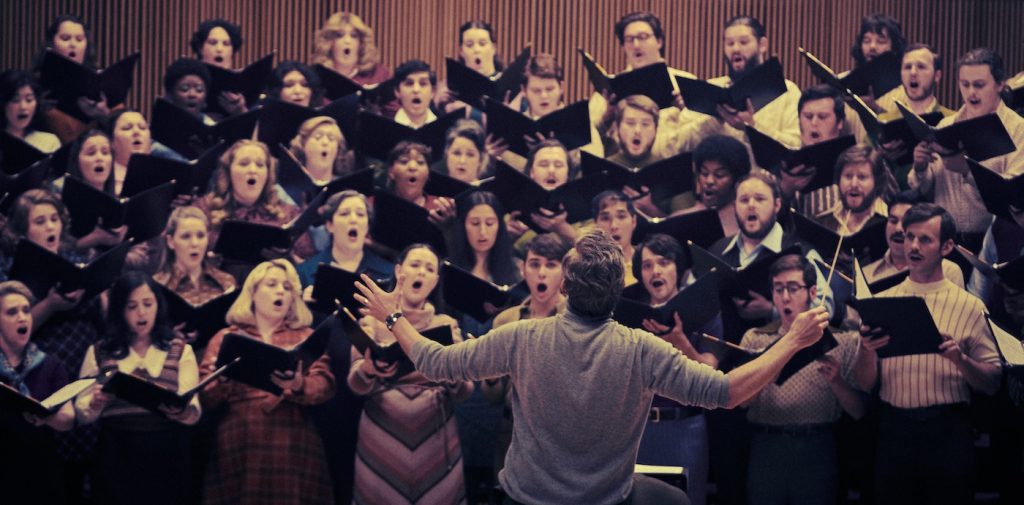
Spanning four decades of love, art, and loss, the tortured yet deeply moving marriage of American composer and conductor Leonard Bernstein (Bradley Cooper) and Costa Rican actress Felicia Montealegre Bernstein (Carey Mulligan), serves as the crux of Cooper’s sophomore directorial offering. Rather than a pure biopic, Maestro — the visually (and sonically) absorbing musical drama from Netflix — anchors its narrative verve on the couple’s tumultuous marriage and the sacrifices that art demands.
His second collaboration with Cooper since 2018’s A Star Is Born, cinematographer Matthew Libatique (Black Swan, The Whale) especially appreciates the director’s keen sense of editorial. “He has the mind of an editor — he really understands structure and scenes that he needs and doesn’t need. I think it has to do with how much he has worked with Clint Eastwood and David O. Russell,” says Libatique, who was nominated for an Oscar for A Star Is Born.
With six years devoted to prep, Cooper’s commitment to authenticity included spending six years learning how to conduct so that they could execute a six-minute live sequence to recreate Bernstein’s 1973 show-stopping performance at the Ely Cathedral, where he led the London Symphony Orchestra in Mahler’s “Resurrection” Symphony No. 2. “He creates a lot of depth and with every choice, whether it’s the shot or his performance, it’s about creating as much depth as possible. Every layer is one step closer to authenticity,” Libatique reveals of Cooper’s style.
Shot on Kodak film with Panaflex Millennium XL cameras, the visual palette is a mixture of 1.33:1 in black and white (Eastman Double-X 5222) and color (Vision3 500T #5219 for interiors and Vision3 200T #5213 for exteriors) and 1.85:1 for the scenes that took place in 1989, which bookend the film with an aging Lenny reminiscing about his life years after Felicia’s passing. “We came up with the decision of framing with 1.33:1 after months of shooting tests that ended up with a 40-minute proof of concept. We tried every format – 35mm film, ARRI 65, RED, Alexa, a multitude of lenses, anamorphic, but we really fell in love with the 1.33:1,” Libatique recalls of the meticulous process.


“We wanted to first transport the audience into this time period of Lenny’s life in 1.33:1 black and white. When the story graduates into the 1970s, to mark the time period, we switched to color. Then, after Felicia dies, the film expands to 1.85:1,” Libatique explains. In addition to delineating time periods, the different aspect ratios also have a way of setting the emotional tone: “The 1.33:1 frame, because of its lack of left and right, feels like an embrace of these two people.”

Moments after the movie begins, the conductor’s meteoric rise is captured efficiently in an exuberant “God POV” sequence that compresses space and time. After Lenny gets an early-morning call to step in for a guest conductor that night at the New York Philharmonic, he dashes out of bed, leaving clarinetist and lover David Oppenheim (Matt Bomer), and strides down the aisle that magically leads into Carnegie Hall, all of which was captured in one sweeping camera move. “Bradley wanted the camera very high, looking down at Lenny at the very beginning of the film, and the camera lower while he conducted. So, he had this idea of the God POV pulling Lenny into his future life. As he conducted, he becomes larger than life, so the camera was a lot lower,” Libatique shares.

Since the set was already built, it took some work to figure out how to get that shot. “The main piece of gear that we used was a 45-foot telescopic crane. We started in the bedroom and then graduated to the hallway and eventually blended into Carnegie Hall. That was a tricky shot. We did maybe twelve takes of it, and around take four or five is the one that ended up in the film because Bradley saw how it really felt like the camera was pulling Lenny.” This is one of the two black-and-white shots in the film where color film stock was used due to light conditions, as Libatique reveals: “The shot that pulls you into Carnegie Hall was shot on color film [and then filtered to black and white] simply because it was much faster and more sensitive. There was no way to really bring up the light levels inside that space. But everything else was shot in regular black and white and not colorized.”

Even though Felicia remained the love of his life, Lenny continued to have affairs with multiple men throughout their marriage and raising three children. One of their many ferocious quarrels was shot entirely framed through the arch trellis in their garden. “The minute you put the camera in between two people being very emotional, it takes a little away from the intensity of that performance. Bradley liked being further away so that the actors could really emote when they could just really feel comfortable,” Libatique notes. Shooting that scene from afar “made me feel like I was trying to hear it more. With that obstruction, you can’t see everything, but you’re trying to hear it.”

Amidst the soaring music and the crackling, overlapping banter, one of the emotionally crushing scenes is the tearful, unspoken farewell between Lenny and David as they walk alongside each other on a Manhattan sidewalk, years after both men have married women and had children. The camera stays on both men for a few beats, their faces telegraphing every sliver of emotion. “It was a very subtle way of conveying the dynamic between them, the kind of sacrifices they had to make because of the time period that they lived in,” Libatique remarks. The scene was originally shot with dialogue, but Cooper and Bomer’s understated yet moving performances amplified the pain in the silence. “We were able to veil those emotions and anxieties with that silence, which then culminates with Lenny suddenly stopping and breaking down. The scene originally had dialogue in it, we did one take silent, and that’s what you see in the film.”

When it came time to shoot the pinnacle of the film from the music perspective, they had the majestic Ely Cathedral and the London Philharmonic Orchestra for three days — one for rehearsal and sound check, and two for filming. “The acoustics were phenomenal in that space. We were all in there prepping, and when the philharmonic started playing, everyone literally stopped whatever they were doing. I sat in the front row, first pew, just listening. It was the most moving thing,” Libatique recalls of the singular experience. Cooper captured the essence of Bernstein’s physicality and zeal in the cathartic and transcendent sequence in one live six-minute take on the second day of shooting. “It was basically captured in one shot. It cuts out of that shot to show some of the orchestra, but then it cuts back to that single shot [of Lenny conducting]. The telescopic crane goes over the musicians and up to Lenny and then back to the musicians again. That was a magical take, and that’s what’s in the film.”

Maestro is in theaters and streaming on Netflix.
This article was first published on The Credits